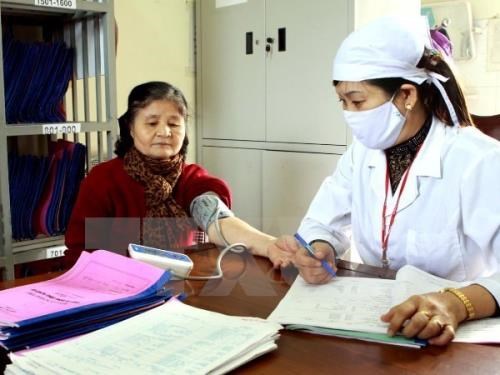Can Tho to launch model of controlling non-infectious diseases
 A medical worker gives blood pressure test to an elderly woman (Source: VNA)
A medical worker gives blood pressure test to an elderly woman (Source: VNA)Can Tho (VNA) – A model to control non-communicable diseases (NCDs) will be launched in Can Tho with support from the World Health Organisation (WHO).
The information was heard at a working session between the People’s Committee of the southern city of Can Tho and representatives of the WHO on May 18 in the locality.
The project aims to enhance NCDs detection and management capacity of local healthcare facilities by providing new equipment and training courses, said Lokky Wai, a representative of the WHO in Vietnam, adding that it is expected to reduce pressure on higher-level facilities.
After training, local facilities are hoped to able to assess, consult and track NCD cases such as obesity, diabetes and high-blood pressure, he noted.
The model will initially be carried out in Long Tuyen and Thoi An Dong wards of in Binh Thuy district and Co Do district’s Thoi Xuan and Trung An communes, before expansion to other six units by 2018.
Non-infectious diseases claim the lives of
about 400,000 Vietnamese people each year, according to Deputy Health Minister
Nguyen Thanh Long at a recent conference seeking to prevent and control the
diseases.
The number of suffers are rising at an
alarming level, he stated, revealing that 70 percent of deaths each year are
caused by non-communicable diseases, of whom 40 percent are under 70 years old.
He attributed the fact to the unhealthy
lifestyle of many Vietnamese, adding that there are currently 49 percent of
males smoking cigarettes, and 77 percent of the population consuming alcohol.
The Health Ministry has set a target of
decreasing the rate of deaths caused by non-infectious diseases to 20 percent
by 2025.
It also aimed to reduce 30 percent of
smokers, 10 percent of alcohol users, while cutting down the amount of salt
used by 30 percent, controlling the rate of obesity under 15 percent and the
rate of high blood pressure patients under 30 percent.-VNA













